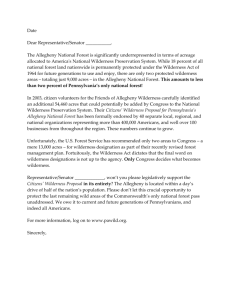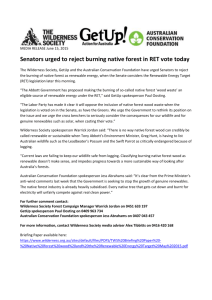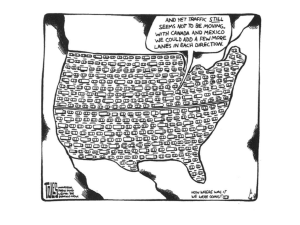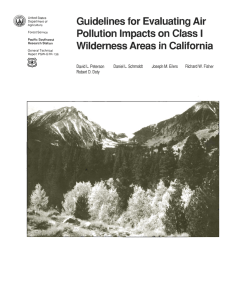Forest Service Responsibilities and Authorities to Mitigate Potential
advertisement
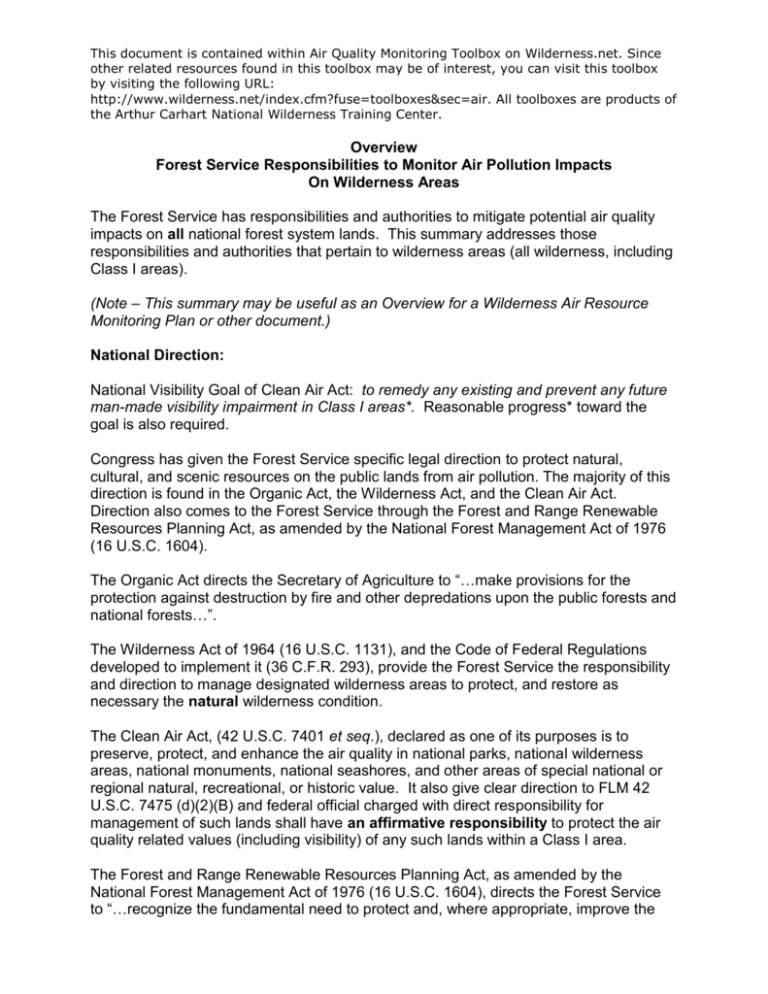
This document is contained within Air Quality Monitoring Toolbox on Wilderness.net. Since other related resources found in this toolbox may be of interest, you can visit this toolbox by visiting the following URL: http://www.wilderness.net/index.cfm?fuse=toolboxes&sec=air. All toolboxes are products of the Arthur Carhart National Wilderness Training Center. Overview Forest Service Responsibilities to Monitor Air Pollution Impacts On Wilderness Areas The Forest Service has responsibilities and authorities to mitigate potential air quality impacts on all national forest system lands. This summary addresses those responsibilities and authorities that pertain to wilderness areas (all wilderness, including Class I areas). (Note – This summary may be useful as an Overview for a Wilderness Air Resource Monitoring Plan or other document.) National Direction: National Visibility Goal of Clean Air Act: to remedy any existing and prevent any future man-made visibility impairment in Class I areas*. Reasonable progress* toward the goal is also required. Congress has given the Forest Service specific legal direction to protect natural, cultural, and scenic resources on the public lands from air pollution. The majority of this direction is found in the Organic Act, the Wilderness Act, and the Clean Air Act. Direction also comes to the Forest Service through the Forest and Range Renewable Resources Planning Act, as amended by the National Forest Management Act of 1976 (16 U.S.C. 1604). The Organic Act directs the Secretary of Agriculture to “…make provisions for the protection against destruction by fire and other depredations upon the public forests and national forests…”. The Wilderness Act of 1964 (16 U.S.C. 1131), and the Code of Federal Regulations developed to implement it (36 C.F.R. 293), provide the Forest Service the responsibility and direction to manage designated wilderness areas to protect, and restore as necessary the natural wilderness condition. The Clean Air Act, (42 U.S.C. 7401 et seq.), declared as one of its purposes is to preserve, protect, and enhance the air quality in national parks, national wilderness areas, national monuments, national seashores, and other areas of special national or regional natural, recreational, or historic value. It also give clear direction to FLM 42 U.S.C. 7475 (d)(2)(B) and federal official charged with direct responsibility for management of such lands shall have an affirmative responsibility to protect the air quality related values (including visibility) of any such lands within a Class I area. The Forest and Range Renewable Resources Planning Act, as amended by the National Forest Management Act of 1976 (16 U.S.C. 1604), directs the Forest Service to “…recognize the fundamental need to protect and, where appropriate, improve the June 6, 2005 quality of soil, water, and air resources…”. This Act does not differentiate the protection between Class I, II or III areas. Regional Direction (Note – this example is from FS Region 3, Check for similar direction from your Region): FS Manual 2500, Watershed and Air Management, Chapter 2580 Air Resource Management and the regional supplement provides objectives and specific responsibilities for the Director of EAP-WSA and Federal Land Manger (e.g., Forest Supervisors in Region 3). The Director of EAP-WSA shall: “Provide leadership in the inventory, monitoring, and evaluation of AQRV and air pollution effects on National Forests and National Grasslands.” Forest Supervisors shall: “Inventory AQRV and other resource values affected by air pollution to determine baseline and/or existing condition. Monitor selected indicators of these values in Class I areas and priority Class II areas. Make such information available to the Environmental Protection Agency and the State, City or County permitting authority upon request or when resource conditions are impaired due to air quality.” _____________ Class I areas are defined in the Clean Air Act: national parks over 6,000 acres, national wilderness areas and national memorial parks over 5,000 acres, and international parks that were in existence as of August 7, 1977. In 1977, Congress mandated 158 national parks, wilderness areas, international parks and other areas to receive the most stringent protection from increases in air pollution. It also set a visibility goal for these areas to protect them from future human-caused haze, and to eliminate existing humancaused haze, and required reasonable progress toward that goal. There are XX Class I areas in the XXXXXX Region that are administered by USDA Forest Service. (Note Fill in with appropriate numbers for your Region.) Reasonable progress: Reasonable progress refers to progress in reducing humancaused haze in Class I areas under the national visibility goal. Reasonable progress towards the national visibility goal is achieving continuous emission reductions necessary to reduce existing impairment and attain steady improvement of visibility in mandatory Class I areas, and managing emissions growth so as to prevent perceptible degradation of clean air days. 2
